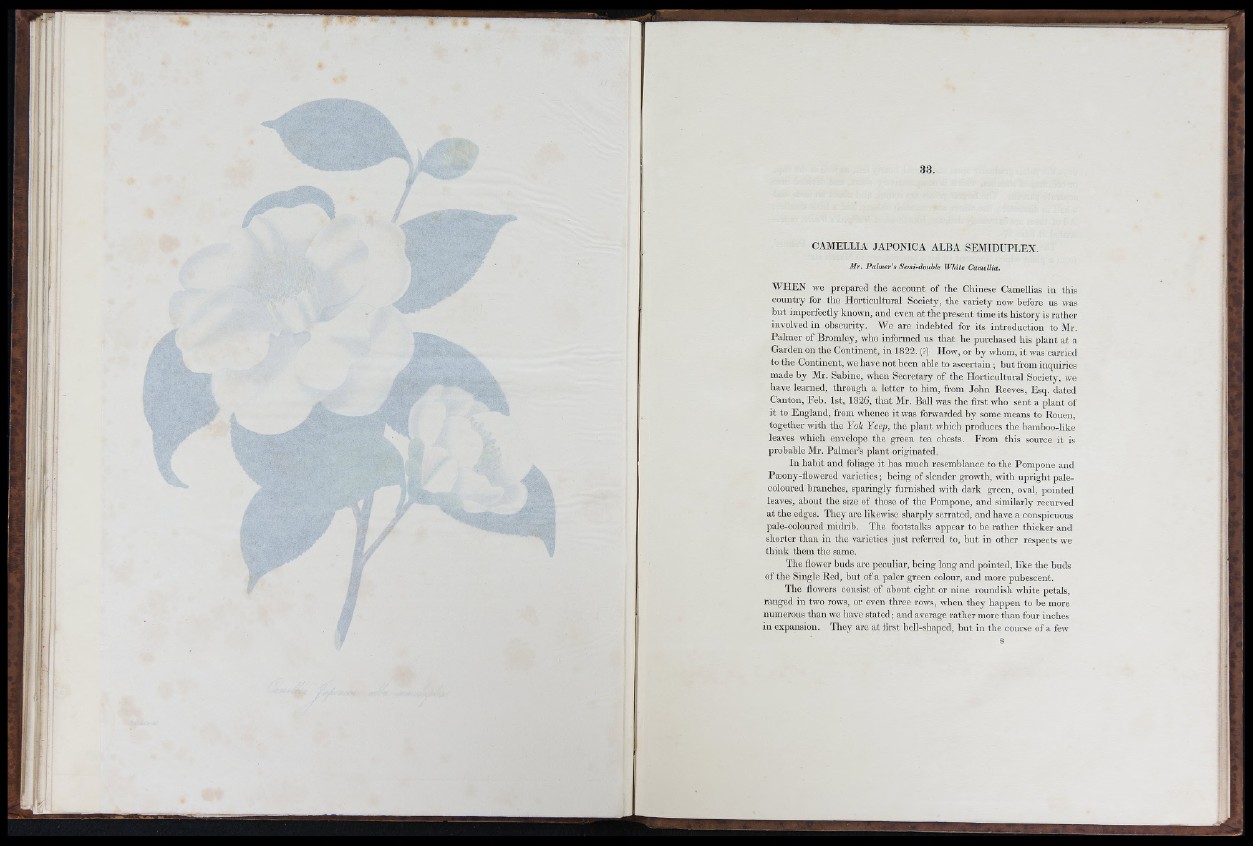
- • V. ■ '.... ■
33.
CAMELLIA JAPONICA ALBA SEMIDUPLEX.
M r . P a lm e r 's Semi-double W h ite Camellia.
W H EN we prepared th e account of the Chinese Camellias in this
cou n tiy for the Horticultural Society, th e variety now before us was
b u t imperfectly known, and even at the present time its history is rather
involved in obscurity. We are indebted for its introduction to Mr.
Palmer of Bromley, who informed us th a t he purchased his p lan t at a
Garden on the Continent, in 1822. (>) How, or by whom, it was carried
to th e Continent, we have n o t been able to asc e rta in ; b u t from inquiries
made b y Mr. Sabine, when Secretary of the Horticultural Society, we
have learned, through a le tte r to him, from John Reeves, Esq. dated
Canton, Feb. 1st, 1826, th a t Mr. Ball was th e firat who sent a plan t of
i t to England, from whence it was forwarded b y some means to Rouen,
together with th e Yok Yeep, the p lan t which produces the bamboo-like
leaves which envelope the green tea chests. From this source it is
probable M r. Palmer’s p lan t originated.
In habit and foliage it has much resemblance to the Pompone and
Pseony-flowered v arieties; being of slender growth, with u p rig h t pale-
coloured branches, sparingly furnished with dark green, oval, pointed
leaves, about the size of those of the Pompone, and similarly recurved
a t th e edges. They are likewise sharply serrated, and have a conspicuous
pale-coloured midrib. The footstalks appear to be rather thicker and
shorter th an in the varieties ju s t referred to, b u t in other respects we
th in k them th e same.
The flower buds are peculiar, being long and pointed, like th e buds
o f the Single Red, b u t o f a paler green colour, and more pubescent.
The flowers consist of about eight or nine roundish white petals,
ranged in two rows, or even three rows, when they happen to be more
numerous th an we have s tated ; and average rath er more than four inches
in expansion. They are a t first bell-shaped, b u t in the course of a few
I?